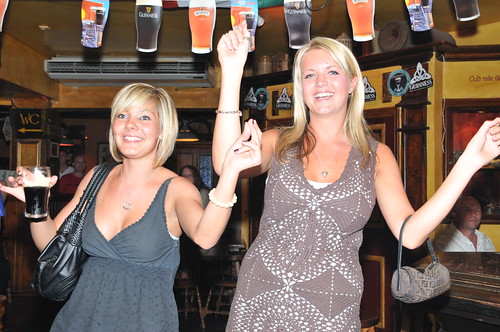
Weddings are a grand affair no matter where
they are held. All across the world different cultures have protected and
incorporated long-standing traditions into their wedding ceremonies. Here is a
look at three intriguing wedding traditions from three supremely beautiful
countries.
Weddings
in Portugal
Portugal is a culturally rich country that
lies on a narrow corner of the Iberian Peninsula. Residents and visitors enjoy
a temperate climate, historical relics, rich art styles and captivating
scenery.
Fairytale unions are popular in this
southwestern, European republic. Endless gardens, lush valleys, mountaintops
and pristine beaches are home to some of the most beautiful weddings in the
world.
Although visitors come from far and wide to be
wed in scenic Portugal, resident weddings are full of culturally significant
traditions. When a local couple marries, the priest covers them with his stole
as a symbol of the joining of souls. After the wedding, both bride and groom walk
through their town for everyone to see. Candy and flowers are tossed at the
bride and groom as they exit the church.
Weddings
in Slovenia
Situated between the Alps and the
Mediterranean, Slovenia has an incredibly diverse landscape including countryside,
mountains, vineyards, lakes and coastline on the Adriatic. Neighbors to
Slovenia include Austria, Italy, Hungary and Croatia. Known as Europe’s
greenest nation, this country with just over 2 million has over half of its
landmass covered in dense forests.
Many historic castles and mansions offer
wedding halls for those looking for a truly unique experience. Idyllic outdoor
venues are not hard to find. During the warm summer months, couples use the
expansive landscape as a beautiful backdrop for their momentous day.
One of the most popular places for a Slovenian
wedding is at Bled Castle, an elegant, historical structure located on top of a
rocky cliff overlooking the pristine resort area of Lake Bled. Grooms be aware,
if you plan on wedding at Bled Castle it is customary for you to carry your
wife up the 99 stairs to the top!
In traditional Slovenia weddings, there is an
unveiling ceremony. The bride’s veil is taken off, and a red carnation is
placed in her hair. This signifies the transition from maidenhood to married
life. During this same ceremony, a red carnation replaces the groom’s white
boutonniere.
Guests arrive at the home of the bride early
in the morning on the wedding day and take part in Slovenian wedding games. The
most popular game “ Kidnap the Bride” involves the groomsmen kidnapping the
bride and taking her to various taverns throughout the town. The kidnappers
leave clues along the way and when the groom finally finds his bride he must
pay a ransom for her return.
Weddings
in Andorra
Tucked neatly between the borders of France
and Spain there lies a tiny, but breathtakingly beautiful country called
Andorra. This European prize full of slender valleys sits high in the Pyrenees
mountain range. Virtually untouched and unspoiled architecture, culture and
countryside form one of Europe’s oldest and smallest countries with roots
stretching as far back as the early 800’s.
Venue options are plentiful in this tranquil
principality. For those wishing an outdoor affair, there are lush meadows, elegant
pine forests, rambling brooks or snowcapped mountain peaks to consider. Simple
and elegant Romanesque churches dot the landscape, stony bell towers reaching
towards the blue sky.
An Andorran wedding is an extraordinarily
elaborate affair full of music and dancing. Traditionally, Andorran brides
place flowers in their hair, each flower with its own distinctive meaning.
Guests often throw flowers at the bride and groom after the ceremony.
Historically, Andorran women do not take their husband’s name.
About the
Author:
Susan Patterson is a freelance writer
and a homeschool mother who enjoys researching and writing on different
cultures. She writes for various websites including Transparent Language.






